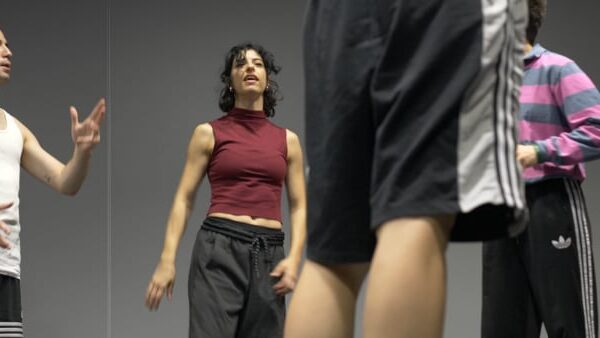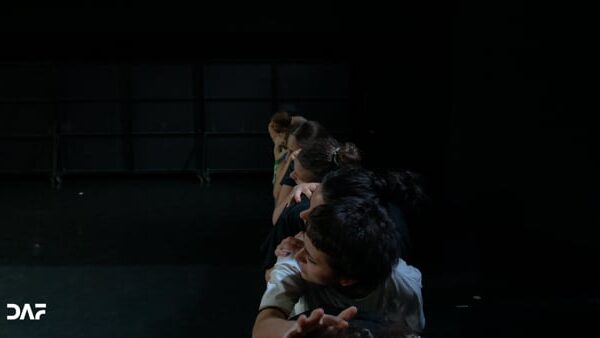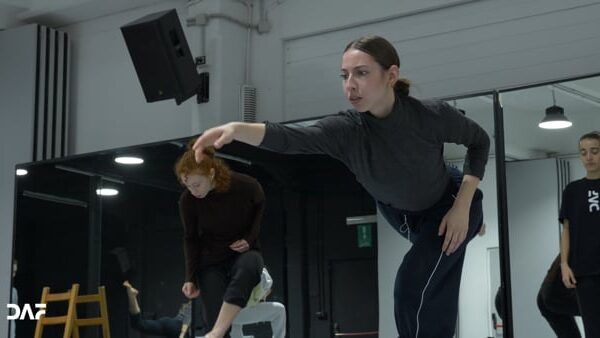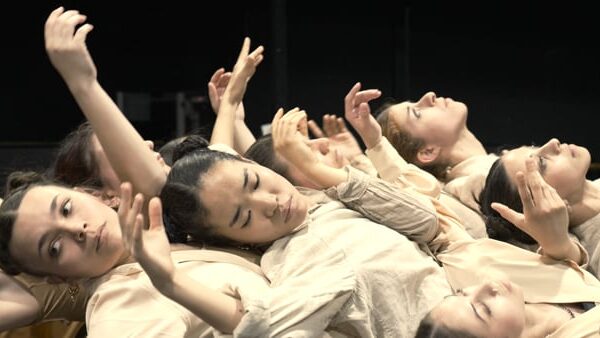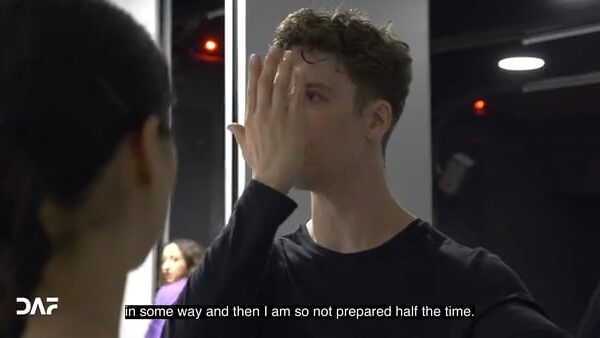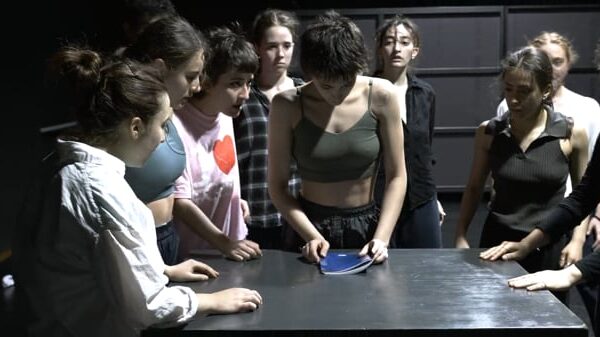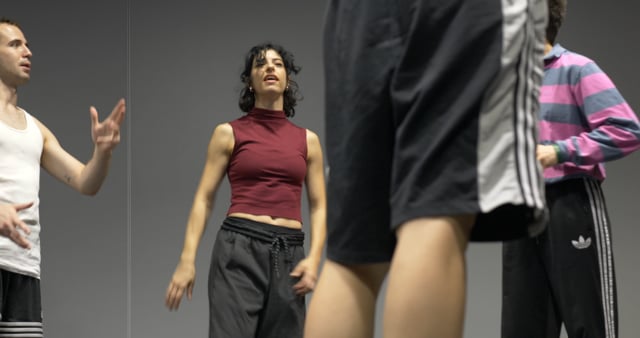Paese: Israele
Compagnia: Batsheva Ensemble
Contemporary choreographer Hillel Kogan works at the crossroads of dance and theatre. His pieces combine movement, text, and occasional found objects/sounds into a multilayered visual language that intelligently and whimsically navigates itself between subtle and more explicit commentary on the world of dance, popular culture, and contemporary society.
Kogan’s focal points of inquiry are recognizable, almost archetypical, ‘people of dance’: contemporary choreographers struggling with the creative process (What Now), dancers reflecting on dance (Dancer is the Answer), an Arab dancer and symbolic ‘Other’ in an ‘Israeli’ dance piece (We Love Arabs), and a ‘swan-like’ young female dancer working with a mature male choreographer (The Swan and the Pimp). These ‘Everymen’ (or women) move and think in the present while constantly encountering their danced heritage and various cultural icons – be it Jazz music, Hummus, the Star of David or Baguettes.
These artifacts serve Kogan’s practice of uncovering the ideological within the aesthetic, acknowledging hierarchies of age, gender, and ethnicity that exist, and eventually dominate, the realms of dance and culture. These systems of power are used – and abused – in the works, only to be deconstructed through theatrical and literary mechanisms, such as irony and parody, estrangement, and intertextuality, in order to question their validity as standards and criteria for dancing, and creating, in present times.
Consequently, Hillel Kogan’s works expose dance as not only an artistic language, but a locus for constructing meaning, defining categories, and establishing norms, within which the dancing body – always conflicted in one way or another – raises, in its very presence, reflections on what is considered proper, beautiful, cool, interesting – in dance and society. This unique form of danced-discourse that Kogan has developed embodies his self-reflexive position, best described as meta-dance: the exploration of identifiable artistic codes, visual images or theatrical conventions as a channel for critical contemplation on the craft of the choreographer, the nuances of the creative process, and the relationship between performance and spectator – always based on traditional, more orthodox, expectations.


